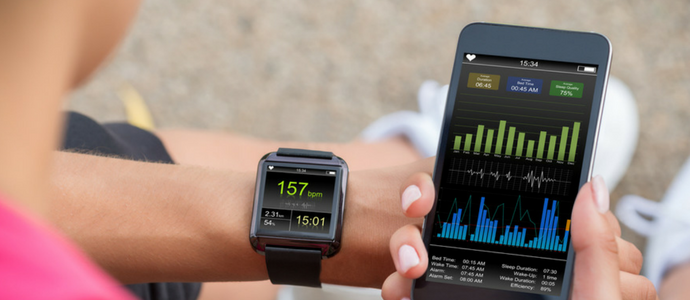How Wearables Are Changing The Healthcare Industry

It may come as a surprise, but wearable devices have been around for centuries. The first wearable was introduced in the 1660s by the Qing Dynasty. The device was a small ring with a fully functional abacus used for calculating. They popularity of wearables has shifted from royalty to the healthcare industry. Over the past decade, companies have created wearable devices for consumers and doctors alike to give insight into their own daily health and the health of patients.
The wearable technology market is set to reach $150 billion by 2027. The healthcare industry is expected to own a portion of the market share as doctors, nurses, and patients incorporate it into their lives and processes. Let’s take a look at exactly how wearables are changing the game for the healthcare industry.
Wearables in the Wild: How Patients and Doctors Use These Devices
The most common wearables to monitor your health are Fitbit, Garmin, and Apple Watch. These are household names and are immediately recognizable if they are seen on someone’s wrist. Primarily, these wearable devices for consumers track daily steps, exercise levels, heart rate, and even sleep schedules. The next generation of Apple Watches will reportedly feature glucose monitoring for people with diabetes. Another company called MC10 has created wearable patches for ECG recording and cardiac monitoring. It has also collaborated with L’Oreal to design the first-ever skin sensor that detects UVA and UVB exposure. Wearable devices not only help people keep track of their health, but also make it a fun experience gaining insight into their daily health and exercise levels.
Wearables are also used often in the healthcare industry, specifically in hospitals. Doctors and nurses use wearables to keep constant monitoring of patient vitals and conditions, to increase efficiency and reduce time gathering health data, and more.
In 2017, the FDA approved the first pill with a sensor that can track is patients have swallowed it. The Abilify MyCite has an ingestible sensor embedded in the pill that transmits a message to a wearable patch. The patch then transmits information to a mobile application. This technology is expected to be a hit when treating mental health disorders and chronic diseases like diabetes since medication adherence is a challenge for these populations.
Another wearable that is used in hospitals is the Zephyr Anywhere’s BioPatch. It’s an FDA-approved device that helps track the patient’s conditions minute-by-minute instead of the usual four to eight-hour window while at the hospital. This wearable is attached to a patient’s chest to monitor their health. If there is a dip in their health or condition, nurses and doctors are notified immediately from the patch to a smartphone. This wearable allows patients to leave the hospital when stable, with the comfort of knowing their health, will be monitored 24 hours a day.
Even though Google Glass didn’t hit the mainstream market as anticipated, it’s become a popular choice for some doctors. In 2017, Google unveiled the Glass Enterprise Edition to specifically target businesses. One company, Dignity Health, utilizes Glass and a remote scribe that allows doctors to simply wear the device and talk to their patient. The technology performs the administrative work, such as note-taking, in the background. Patient-record keeping is a huge time suck for doctors, so many are catching on to these benefits of the wearable technology.
One of the most notable uses of Google Glass was by Pierre Theodore, MD., who performed the first surgery approved with Google Glass. With the Glass, he was able to look at x-rays and other important patient records while operating on the patient.
What’s Next For Wearables
The FDA is investing in the development of digital health applications and wearables. In 2017, the FDA selected nine companies to participate in the first-of-its-kind pilot program that will help revolutionize digital health regulation and allow these companies to create new digital health software. The agency launched the Pre-cert pilot program in July as part of its Digital Health Innovation Action Plan. The program is intended to inform a tailored approach toward digital health technology by looking at the software developer or digital health technology developer, rather than primarily at the product.
From patient homes to hospital beds, there is a multitude of uses for wearable devices. Of course, a trip to the doctor's office is still the best method of discovering and tracking health issues, but wearable devices are putting more power in the hands of patients and doctors thanks to insight and data they provide. The sky's the limit when it comes to wearable technology and it will continue to make waves in the healthcare industry.